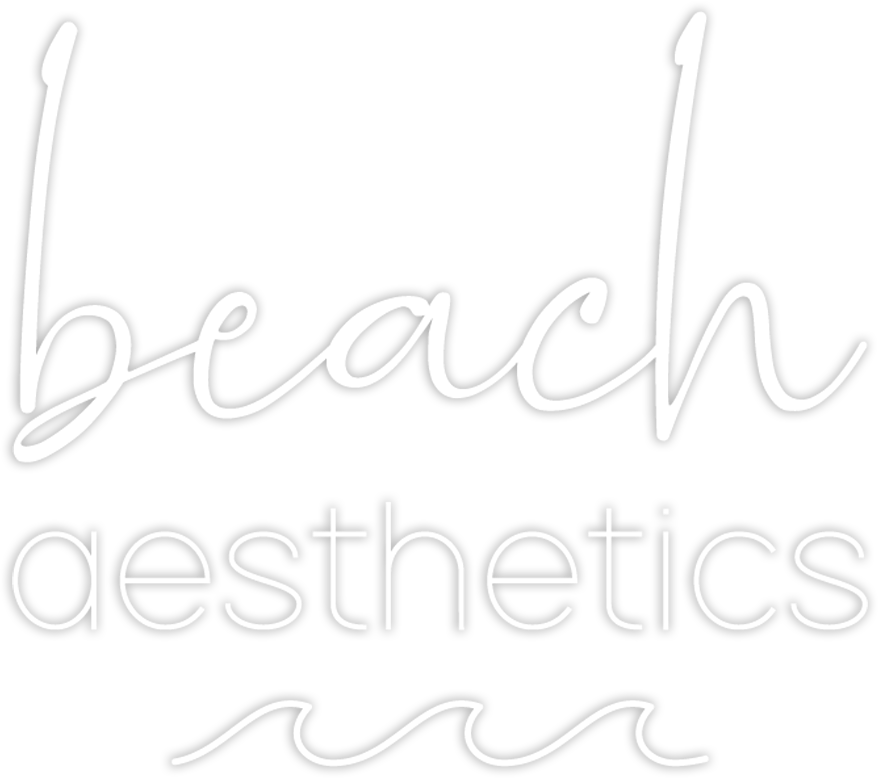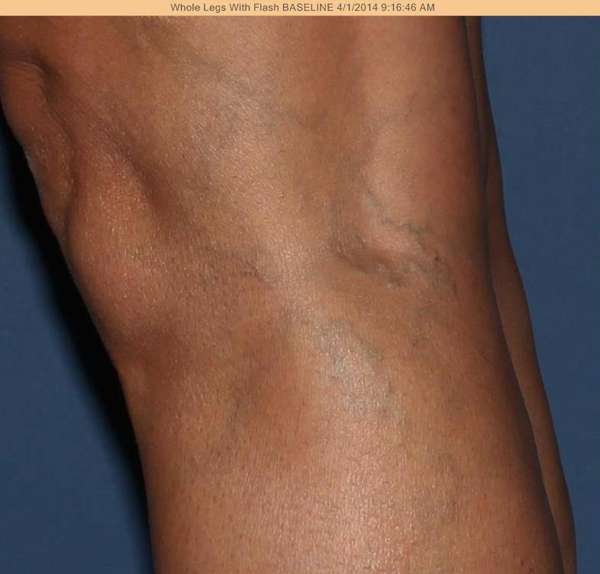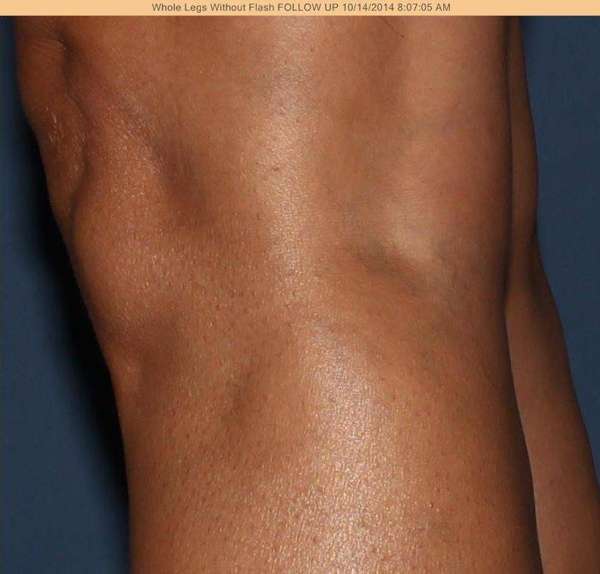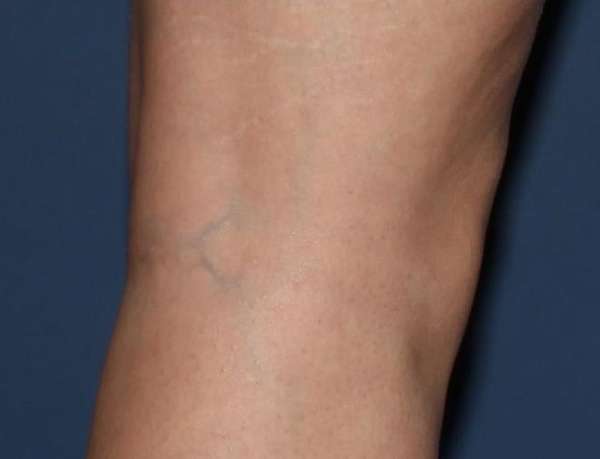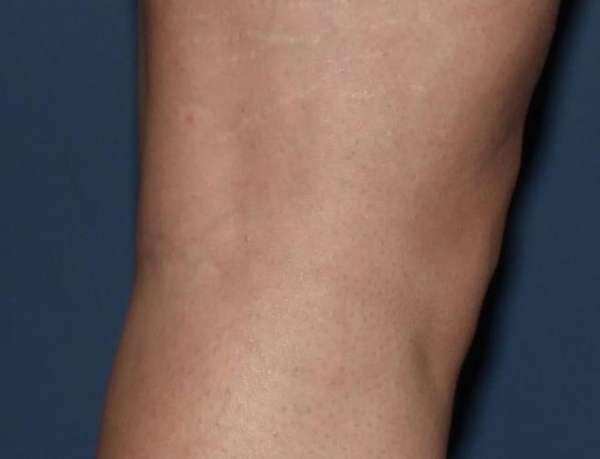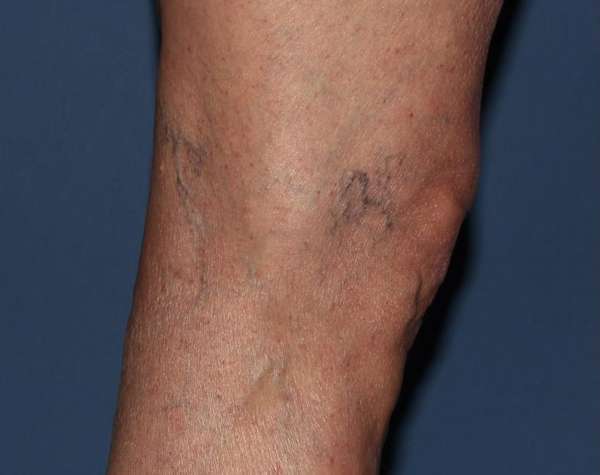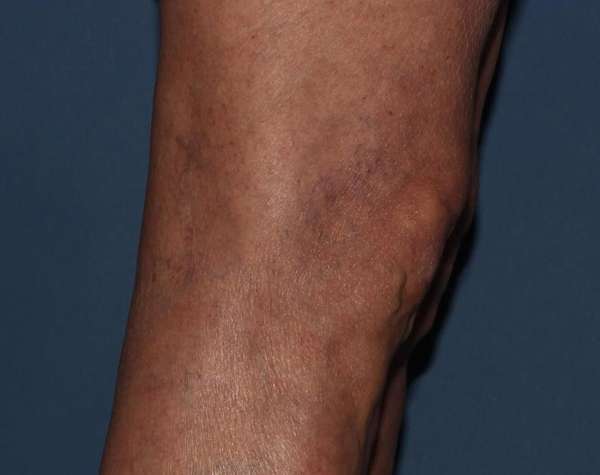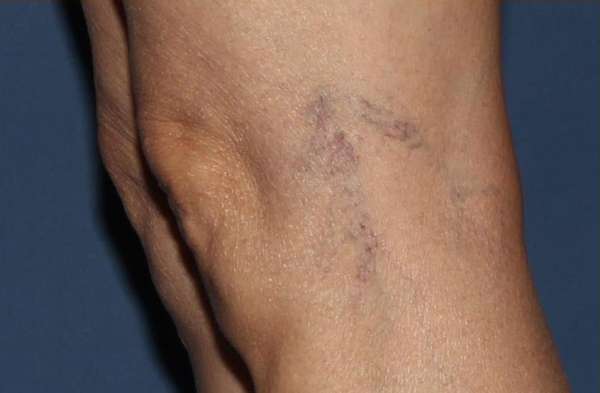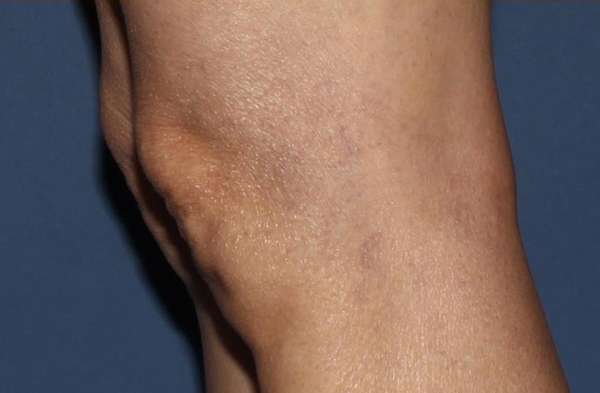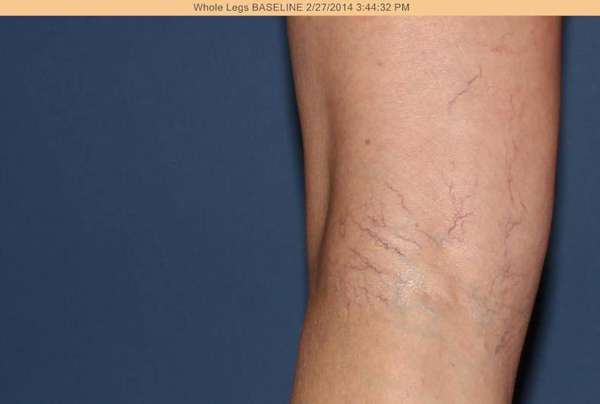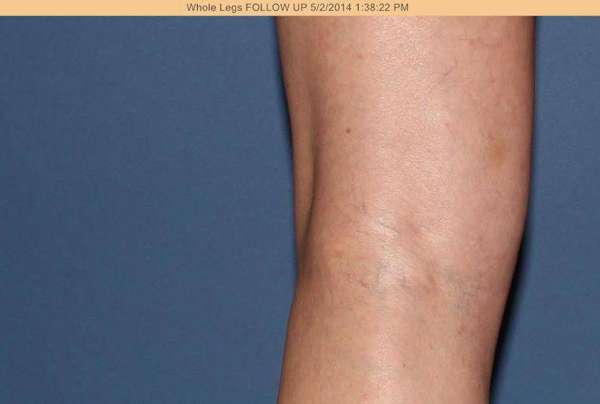Sclerotherapy
Jump To:
- What is sclerotherapy for spider veins?
- What makes sclerotherapy the treatment of choice for spider veins on the legs?
- What medication is injected in spider veins with sclerotherapy?
- What is a treatment like?
- Do I have to wear compression stockings after sclerotherapy for spider veins on my legs?
- Are there any restrictions after sclerotherapy for spider veins?
- What will I notice after sclerotherapy for spider veins?
- Results of spider vein sclerotherapy
- How many treatments will I need?
- Will my spider veins come back?
- Do I have to have my varicose veins treated before I treat my spider veins?
- Is spider vein sclerotherapy covered by insurance?
- Are there any contraindications to undergoing sclerotherapy?
- Am I a good candidate for spider vein sclerotherapy?
- To learn more about sclerotherapy for spider veins…
Introduction
Spider veins can be a source of frustration and embarrassment. Often people go to great measures to cover them up with make-up, self-tanners or excess clothing. While these efforts can be temporarily successful, they don’t eliminate the problem.
There are a number of treatments for spider veins, including sclerotherapy, external laser and VeinGogh. While each of these treatments have areas where they work well, sclerotherapy is considered the gold standard for treatment of spider veins on the legs, chest, and abdomen.
What is sclerotherapy for spider veins?
Sclerotherapy is a simple treatment that involves injecting spider veins through a tiny needle with medication. The medication that is injected causes the vein to seal off and disappear. In most instances multiple injections are needed in order to treat all of the veins that are seen.
What makes sclerotherapy the treatment of choice for spider veins on the legs?
Sclerotherapy in general is better than other treatments for spider veins on the legs because the medication can be injected into the feeder veins that fill the spider veins, thereby closing off the source of the spider veins themselves. Other treatments like external laser and VeinGogh can be effective on the veins at the skin surface but don’t treat the underlying feeder (reticular) veins.
In addition to having an overall better success rate than external laser and VeinGogh for eliminating spider veins on the legs, sclerotherapy causes less discomfort than these other treatments and can be used on all skin types.
What medication is injected in spider veins with sclerotherapy?
The two most common sclerosants used by vein experts to treat spider veins are sodium tetradecyl sulfate (a.k.a. STS or Sotradecol) and polidocanol (a.k.a., POL or Asclera). Another commonly used product is 72% glycerine (diluted with lidocaine). These medications are generally safe and easily tolerated.
You may have heard that some people have injected “saline” into the veins. This is an old-fashioned approach that, while successful, is more painful and carries higher risks than the state-of-the art products used today.
What is a treatment like?
In good hands, a sclerotherapy session is easy to undergo. Initially the treatment area is cleansed with alcohol. Then a tiny needle is used to inject the spider veins with the medication. After the injections you may feel a mild stinging sensation, but this typically goes away in a few minutes. When the treatment is complete, soothing arnica gel may be applied to the skin to help with any itching or bruising you may experience.
Do I have to wear compression stockings after sclerotherapy for spider veins on my legs?
While there is no scientific evidence that wearing compression stockings after spider vein sclerotherapy improves your results, most vein experts put their patients in compression stockings after treatment. This is because the stockings theoretically compress the treated veins, helping them to seal off and disappear. The duration of compression stocking use varies from provider to provider but typically lasts 1-2 weeks after treatment.
Are there any restrictions after sclerotherapy for spider veins?
There is no downtime after sclerotherapy – you can have your treatment and immediately return to work afterwards. As mentioned above, if the treatment was performed for spider veins on your legs, you will be wearing compression stockings for a short while.
For the first week after treatment you should avoid vigorous workouts (e.g., weightlifting, running, and spinning), hot yoga, hot baths and saunas, as these activities may increase the blood flow in your legs and cause the treated veins to open up. Most other normal activities can be resumed as usual. After one week you can resume all activities without restrictions.
What will I notice after sclerotherapy for spider veins?
Immediately after sclerotherapy you may notice a mild burning sensation, redness, itching or swelling at some of the injection sites. This should resolve shortly. Topical application of arnica montana can be very helpful in alleviating these symptoms.
During the month after treatment, you may notice some bruising of the skin – this should resolve shortly. You may also discover that some of the injected veins now appear to be darkened, hard and/or slightly tender – this represent tiny clots (or “trapped blood”) in the treated veins. This trapped blood can be easily removed in the office by your provider, which speeds up the healing process.
Results of spider vein sclerotherapy
After sclerotherapy for spider veins, there is a normal healing period which continues for several weeks. During that time, you should expect some bruising, which gradually disappears. Some of the treated veins may also become hard, dark and perhaps slightly tender – this represents “trapped blood” in the treated veins. If trapped blood forms, you can let it resolve on its own or speed up the process by having the blood expressed with a tiny needle in the office.
It is wise to be patient after spider vein sclerotherapy. Results of a given treatment are probably best assessed one month after the session. While considerable progress can be seen after one treatment, it is not uncommon to require multiple treatments to get the best results.
Most patients get excellent results from spider vein sclerotherapy. While it can be difficult to eliminate all of the spider veins, 70-90% clearance of the veins (with enough treatment) is typically obtained. However, results vary.
How many treatments will I need?
The number of treatments that you need will depend upon a number of factors, including how extensive your spider veins are, how many veins are treated at one time, your provider’s technique, and your response to treatment. In general, however, most patients require several treatments to get the best results.
Will my spider veins come back?
Once your spider veins have been treated and are no longer seen, those veins won’t come back. However, it is possible with the passage of time that new spider veins will form. Any new veins that form may need to be treated.
Think of it as pulling weeds in your garden. As long as you maintain your garden it should look good. But if you neglect your garden, weeds may crop up. The same is true with spider veins. After treatment, with the passage of time, new veins may begin to be seen. Additional treatment may then be needed to help you look your best.
Do I have to have my varicose veins treated before I treat my spider veins?
If you have varicose veins in your legs, they have to be treated before you address your spider veins. The reason why is that varicose veins are caused by venous insufficiency (abnormal downward flow in your veins caused by leaky valves). Venous insufficiency increases the pressure that is filling your spider veins. To get good results from spider vein sclerotherapy, you have to first decrease the pressure in the veins by treating any underlying venous insufficiency.
Is spider vein sclerotherapy covered by insurance?
Unfortunately spider vein treatments are not covered by insurance. Even though some patients may have itching or burning associated with their spider veins, the problem is still considered to be aesthetic by Medicare and all major insurance carriers.
Having said that, spider vein treatments have a great value and are typically affordable. While patients may pay for their treatment with a credit card, financing options are also available through third party vendors like CareCredit and can be paid off over time.
Are there any contraindications to undergoing sclerotherapy?
There are some contraindications to sclerotherapy. One absolute contraindication is active pregnancy. Another is a history of allergic reaction to the sclerosing agent. Breastfeeding is a relative contraindication. However, if you’re breastfeeding you may still be able to undergo sclerotherapy, as long as certain modifications (which should be discussed with your provider) are made to your breastfeeding routine.
Am I a good candidate for spider vein sclerotherapy?
If you have spider veins that bother you physically or aesthetically, are affecting your self-confidence, and/or cause you to do things to cover them up, you’re probably a good candidate for sclerotherapy. To know for sure, however, if this is the best treatment for you it is best to be evaluated by a vein expert.
To learn more about sclerotherapy for spider veins…
Contact Beach Aesthetics at (310) 985-2906 and make an appointment today. Our caring team will take the time to listen to your needs and concerns, perform a careful examination, and assess if sclerotherapy is the best treatment choice for you…or if there is a better treatment option to help you get the very best results possible.
